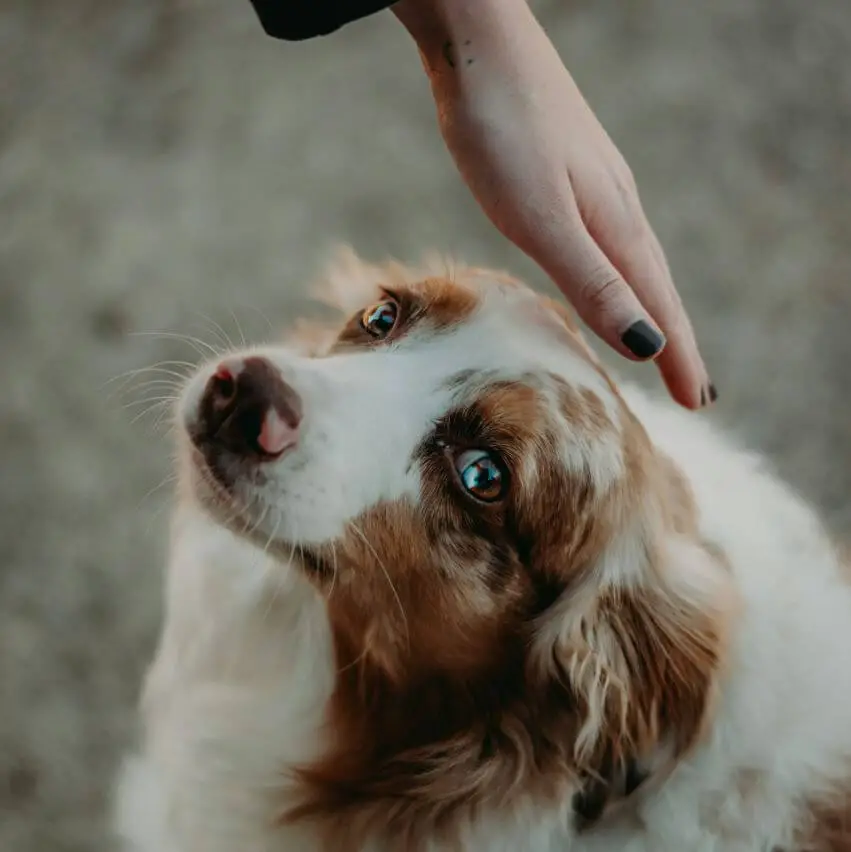Have you ever found yourself puzzled as to why your furry companion suddenly backs away when you extend a hand for a gentle pat? It’s a common scenario that many dog owners face, often leaving them wondering if they’re doing something wrong. However, there are various reasons behind this behavior, and understanding them can help improve your relationship with your canine friend.

Fear or Anxiety:
One of the primary reasons why a dog might recoil from your touch is fear or anxiety. Several factors could contribute to this:
- Past Experiences: Dogs, like humans, can carry trauma from past experiences. If your dog has faced negative encounters such as being hit or startled during petting sessions, they may associate touch with danger and instinctively back away to protect themselves.
- New People or Situations: Meeting new people or finding themselves in unfamiliar environments can be stressful for dogs. In such situations, they may feel uneasy and uncertain, prompting them to retreat when approached for petting.
Pain or Discomfort:
Another crucial factor to consider is whether your dog is experiencing any form of pain or discomfort:
- Underlying Medical Conditions: Dogs may exhibit avoidance behaviors if they’re suffering from injuries, pain points, or medical conditions that make physical contact uncomfortable. It’s essential to rule out any health issues that could be contributing to their aversion to petting.
- Sensitivity in Certain Areas: Just like humans, dogs have sensitive spots. Touching areas such as their paws, tail, or belly can trigger discomfort in some dogs, causing them to back away instinctively.
Miscommunication of Cues:
Sometimes, the way we approach our dogs can inadvertently send signals that are misunderstood:
- Your Body Language: Dogs are incredibly perceptive creatures, capable of picking up on subtle cues. A stiff posture, direct eye contact, or reaching out too quickly can be perceived as threatening, leading your dog to back away defensively.
- Petting Style: The manner in which we pet our dogs matters. Rough patting, grabbing, or holding onto them too tightly can overwhelm them, prompting them to pull away to escape the discomfort.
Respecting Your Dog’s Preferences:
It’s crucial to recognize that not all dogs enjoy being petted:
- Not All Dogs Love to be Petted: Just like humans, dogs have individual preferences. Some breeds or individual dogs are simply less tactile and may not seek out physical affection as much as others. Instead, they may show their love in different ways, such as wagging their tails or staying close by your side.
Tips for Approaching Your Dog:
If you’re unsure how to approach your dog for petting, here are some tips to ensure a positive experience:
- Let Them Initiate Contact: Allow your dog to approach you for petting rather than imposing yourself on them. This gives them control over the interaction, fostering a sense of trust and comfort.
- Calm and Gentle Demeanor: Approach your dog with a relaxed posture, using a soft tone of voice. Move slowly and extend your hand with an open palm to allow them to sniff and become accustomed to your presence.
- Start with Neutral Areas: Begin petting your dog on their chest or sides, areas less likely to trigger discomfort. As they become more relaxed, you can gradually explore other areas if they’re receptive.
- Observe Their Body Language: Pay close attention to your dog’s cues during petting sessions. A wagging tail, relaxed posture, and soft gaze indicate they’re enjoying the interaction. Conversely, signs of anxiety such as flattened ears, lip licking, or avoiding eye contact suggest it’s time to back off and give them space.
- Reward Positive Interactions: Reinforce positive behaviors by offering praise or treats when your dog allows you to pet them without hesitation. This helps create positive associations with petting and strengthens your bond over time.
By understanding the underlying reasons for your dog’s behavior and approaching them with respect and sensitivity, you can build trust and create a more positive experience with petting for both of you. If you’re concerned about your dog’s fearfulness or suspect they may be experiencing discomfort due to an underlying medical condition, don’t hesitate to consult your veterinarian for guidance and support. Your dog’s well-being is paramount, and addressing their needs with compassion and understanding is key to fostering a harmonious relationship.
